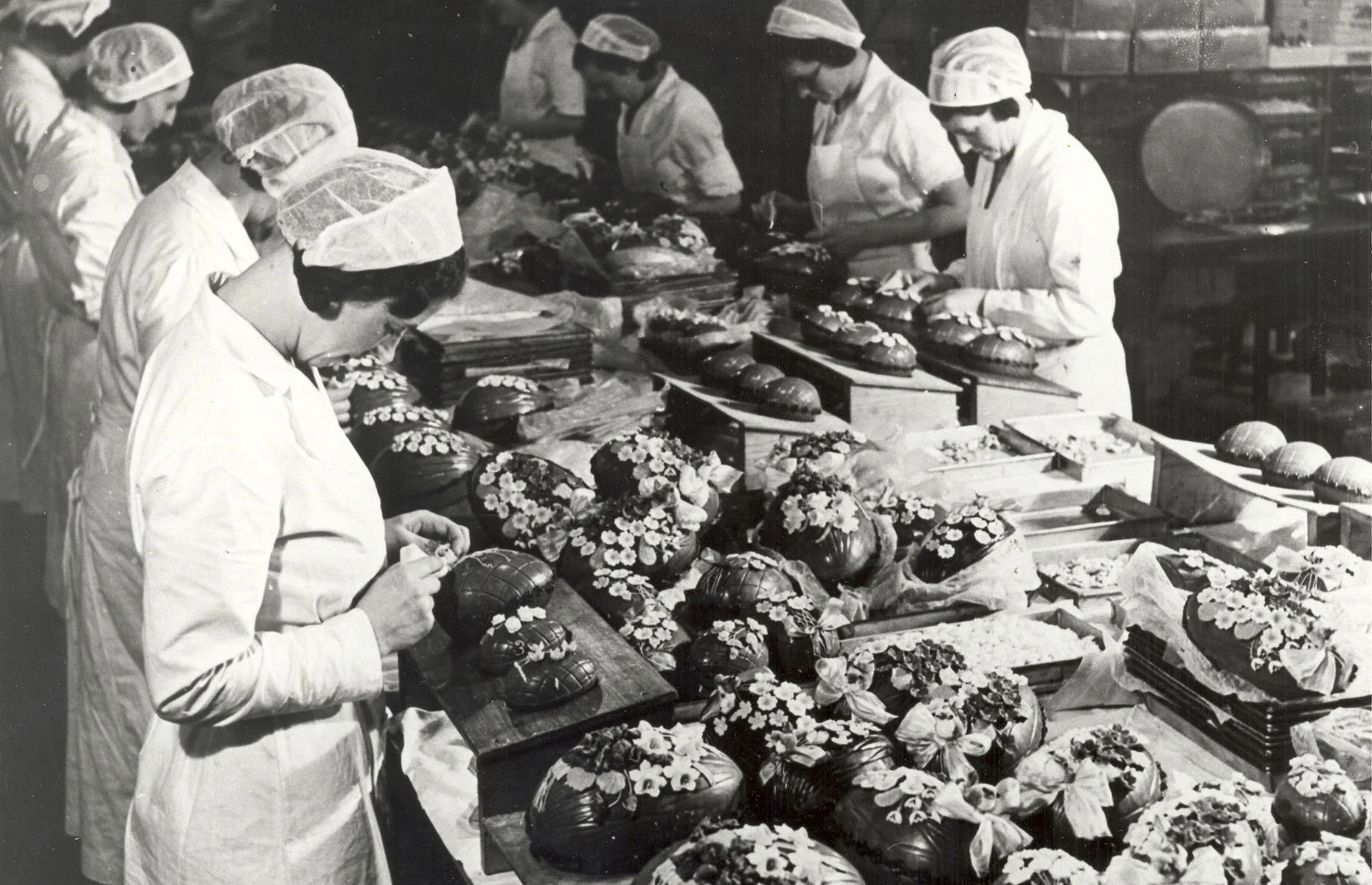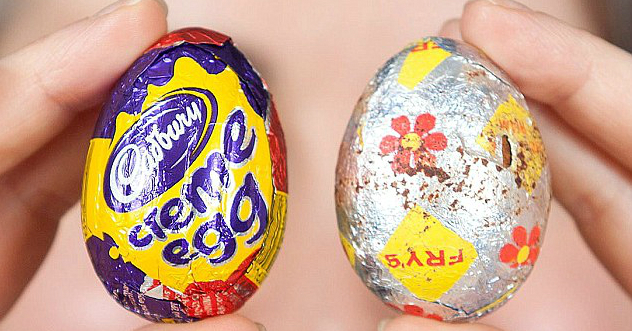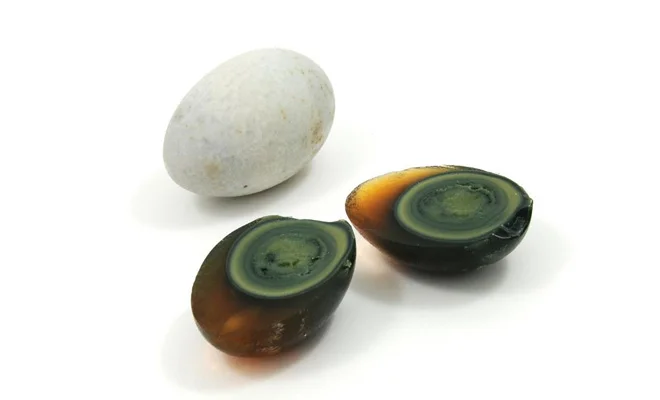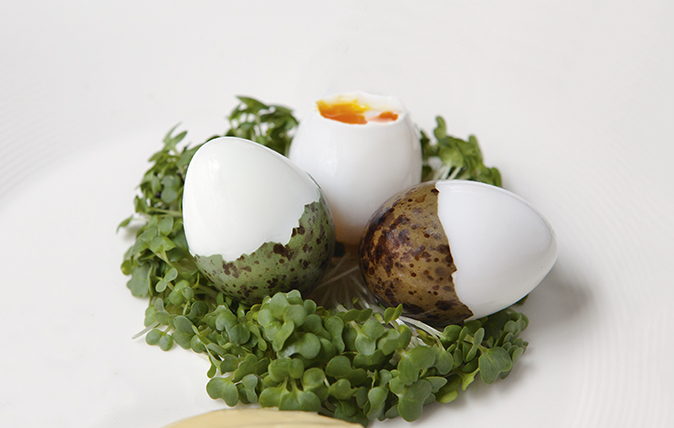8 egg-related facts
From ostrich to gull, chicken to chocolate, we eggsplore the egg. No yolk. So let's crack on.
For millennia, the egg has been regarded as a symbol of creation, new life and rebirth. At some point in time, this symbolism was absorbed into the Christian tradition of Easter - the hatching of a chick reflecting the resurrection of Christ. But in recent years, eggs during Easter have become more associated with sweet treats than religious remembrance. So, with that in mind, this SECONDS is going to focus on what really matters; eggs.
The first chocolate Easter eggs were solid
In Europe during the 17th and 18th centuries, egg shaped toys were given to children as Easter gifts. In Britain, the Victorians gave cardboard and satin eggs filled with chocolate and gifts to each other. But it wasn’t until the start of the 19th century that the first chocolate Easter eggs appeared in France and Germany. Unfortunately for us, these springtime treats were usually made from solid chocolate rather than the hollow versions we’re used to.
The first British chocolate Easter egg was made by JS Fry & Sons of Bristol in 1873, with other confectioners following soon after, including the now-famous Cadbury’s Easter Egg in 1875.
Easter egg production at Cadbury's.
The Creme Egg wasn’t always Cadbury’s
Creme-filled chocolate eggs were first made by Cadbury’s in 1923 but the One True Creme Egg first appeared in 1963 as the Fry’s Creme Egg. It became the Cadbury’s Creme Egg in 1971 (though Fry’s and Cadbury merged much earlier in 1919). According to Mondelēz, the current owner of Cadbury, 200 million Creme Eggs are made each year in the UK - that’s about 3.5 eggs for every person in the country.
A Cadbury Creme Egg today vs. the original Fry's Creme Egg.
In Goa they eat cashew nut Easter eggs
The Portuguese first landed in Goa, in western India, in the early 16th century, ruling the state for 450 years. Their presence encouraged a rich fusion between Portuguese and Goan cuisines - the most famous result of which being vindaloo. But Portuguese bakers were famous for their egg tarts and perfumed marzipan, and Goa’s colonial rulers missed them. To meet this desire, Goan servants created mazpon, a variation of marzipan, which substituted almonds for local cashews. This version of marzipan was eventually used to make Goan Easter eggs, which are still eaten there today.
People have been incubating eggs for thousands of years
As long as 3,000 years ago, the ancient Eggyptians and Chinese were incubating eggs on a pretty hefty scale. The Egyptians used huge ovens heated by straw fires and camel dung. A single attendant could hatch anywhere between 40,000 to 80,000 eggs at once by keeping a constant heat and turning the eggs throughout the day. The Egyptians probably began by hatching goose eggs, while the Chinese hatched duck eggs. Both were eventually replaced by hens’ eggs as the chicken gained popularity. Some may say that both civilisations were eggceedingly good innovators.
The century egg is half a millennium old
Century eggs - also known as hundred-year eggs, thousand-year eggs and millennium eggs - are a type of Chinese preserved egg. They don’t look, smell or taste like your average egg. They’re like dark brown balls of jelly with swampy green centres and have the a pungent smell. In Thailand and Laos they’re known as ‘horse urine eggs’. The taste is described as ‘rather like eating a ripe Camembert, pungent and creamy, with a whiff of ammonia’.
But how did this unusual egg come to be? The story goes that a farmer stumbled upon some duck eggs that had been naturally preserved in a muddy pond of water and slaked lime. After tasting - and enjoying - them, the farmer successfully replicated the process, creating a delicacy that would be eaten throughout China, Hong Kong and parts of Southeast Asia. While details of the actual discovery are lost to time, it’s estimated that century eggs date back to the Ming Dynasty, more than 500 years ago.
Century egg.
Ostrich eggs were eaten throughout the ancient world
Ostrich eggs - the biggest in the world - have been eaten by people for thousands of years, being rich in calories, fat and protein. In the ancient world, they were prized for feeding up to eight people per egg. Lucian (120-180 CE), the Greek writer, said that the Garamantes tribe of north Africa ate the eggs, and Aelian (c.170-235 CE), the Roman author, said that the King of India ate them too. But it doesn’t appear they were widely eaten in Greece or Rome. Galen, the classical physician, said that ostrich eggs (along with goose eggs), were not as nutritionally rich as hen or pheasant eggs.
Turkey eggs were an acquired taste for Native Americans
Wild turkeys roamed North America before the arrival of humans, but once there, it seems we developed a taste for both their meat and eggs. Most Native Americans ate turkey eggs when they came across them; the Hopis, who never ate turkey meat, considered their eggs a delicacy. The Navajos, on the other hand, would happily eat the flesh but never the eggs.
The most expensive eggs in the world are from... gulls
Gull eggs have been eaten in England for hundreds of years, specifically black-headed gulls’ eggs, which are considered a delicacy. It’s no wonder, with descriptions ranging from; ‘richer and gamier than hen’s eggs, they have an intriguingly delicate flavour’ to ‘exquisite sage-green speckled eggs with sunset-orange yolks’. The eggs have an extremely short season, only about 3-4 weeks in Spring. Harvesting of black-headed gulls’ eggs is restricted to five sites in Dorset, England, with only around 20 ‘pickers’ legally operating (though illegal poaching is rife). This makes the eggs, pound for pound, the most expensive eggs on the planet, costing up to £10 each.
Black-headed gulls’ eggs.









